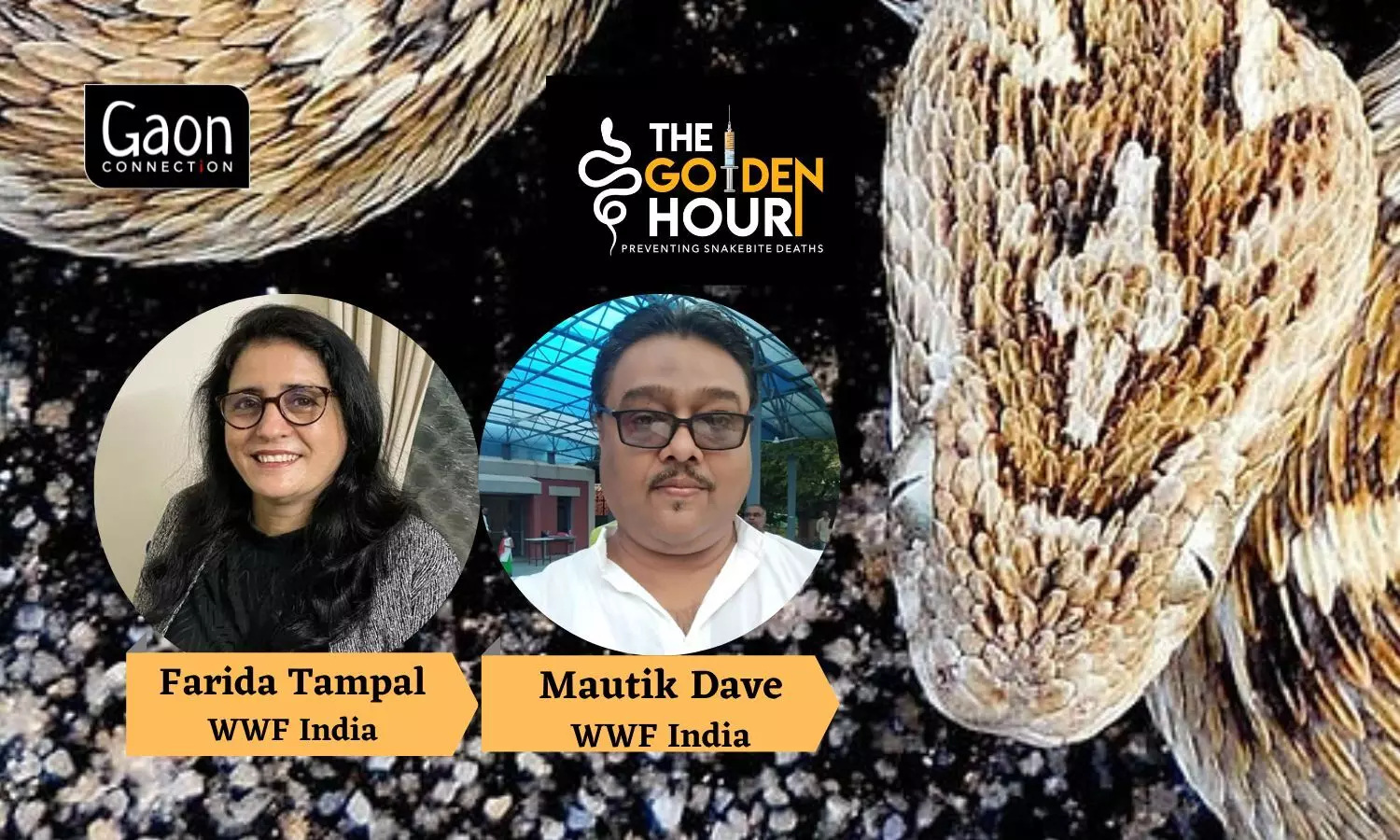Busting myths around snakes and snakebites
Vengeful snakes, snakes that drink milk, cobras with a gemstone in their hoods… There is no dearth of myths associated with snakes in a country that reports about 58,000 snakebite deaths each year. Experts bust some myths in an interview with Gaon Connection.
 Shivani Gupta 19 Aug 2022 1:18 PM GMT
Shivani Gupta 19 Aug 2022 1:18 PM GMT

Lucknow, Uttar Pradesh
Of the total 2.8 million people bitten annually by snakes in India, on average 58,000 people die. And up to 94 per cent of the snakebite deaths are from rural India. According to the July 2020 paper titled Trends in snakebite mortality in India from 2000 to 2019 in a nationally representative mortality study published by eLife, which is a non-profit organisation inspired by research funders and led by scientists. Snakebite claims the life of one person every ten minutes in India.
A number of myths are associated with snakes — they are revengeful, they drink milk, they carry a gem on their hood, keeping a red sand boa brings wealth to the family, and so on.
Watch Video:
As part of its 'The Golden Hour' campaign to raise awareness on preventing snakebite deaths, Gaon Connection interviewed Farida Tampal, Hyderabad-based state director of World Wide Fund and Mautik R Dave, Gujarat-based state coordinator of World Wide Fund (WWF) for Nature — an international non-governmental organisation working to preserve and protect wildlife.
Excerpts from the interview:
Gaon Connection: What are the myths related to snakes and snakebites?
Fardia Tampal: People think Rat Snake is the Cobra's wife and she will come after you if you kill her husband. It is a myth. Red snakes and Cobra never mate. They are different species. Besides, snakes lack the intelligence to trace a person. Bollywood has also promoted such myths. Snakes cannot remember you as they do not have the necessary intelligence to remember people or places to seek revenge.
One of the very common myths is that snakes drink milk. Snakes are reptiles, they cannot digest milk. Snake charmers dehydrate them for days, in such cases they are forced to drink any liquid that is available.
Snake charmers also spread myths about two headed snakes. They will tell you that the snake uses one of its heads for six months of the year and switches to its other head for the remaining six months. The Red Sand Boa is also illegally traded. It is very calm in its nature. Its tail looks similar to its face and snake charmers pierce beads in the tail to make it look like that too is a face.
GC: When do incidences of snakebite increase? How to prevent snakebites?
FT: The incidence of snakebites increases during the monsoons. And when the paddy is being sown or harvested. More than 70 per cent snakebites occur below the knees. Farmers and labourers must use some kind of protection for their feet like gumboots while going into their fields.
GC: Can gumboots save lives?
FT: Sixty eight per cent of the bites happen during night and snakes bite mostly on the area below the knees. Gumboots cost between Rs 200 and Rs 400. But, it is a small price to pay to save one's life. Not just protection from snakes, gumboots will also prevent fungal infections farm labourers often get while working in flooded fields. And, a pair can be used for up to four years.
GC: How do you identify venomous snakes?
FT: You can identify venomous or non venomous bites from the fangs of the snake, and the impression on the bitten area. But, sometimes they may not be very clear.
Mautik Dave: In India, there are more than 300 species of snakes. The most common venomous snakes are the Cobra, Krait, Russell's Viper and the Saw Scaled Viper.
The Common Cobra can be identified by its colour which can range from being light brown with white speckles to black. While the body of the Krait can be a glossy brown or black with white or creamish white bands. It has a large hexagonal scale on the vertebral line.
The Russell's Viper has a stout body with highly keeled scales. The body colour varies between yellowish brown to dark brown and has oval spots which may have white or cream margins forming a chain-like pattern. The colour of the Saw-scaled viper can be in shades of brown or grey with a zig -zag pattern in light yellow or very light brown.
Also Read: "We don't yet have a test to check if a snakebite is venomous or non-venomous"
#The golden hour #story #snakes
More Stories




